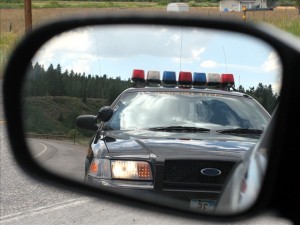317-493-8468
Michigan Window Tint Law
The Michigan Window Tint Law is very restrictive and not friendly to tint shops and drivers seeking to avoid the sun's extreme heat and damaging rays. You will find what the statute outlines for drivers in Michigan here.
Because it is restrictive in nature, many people try to test the bounds of legality by tinting their vehicle illegally. This is not wise as it draws attention from law enforcement vehicles and can result in hefty fines to the driver of a car tinted beyond the legal limit.
The state of Michigan also allows for a medical exemption.
As always, DT Services Window Tinting always suggests to our clients that only legal window tinting should be installed and that residents of Michigan follow the Michigan window tint law.

Our understanding of the Michigan Window Tint Law...
Basically, the Michigan window tint law will not allow for tinting to be applied to the front windows of a motor vehicle if it is darker than a 50% tint. Behind the front seat driver and passenger you are allowed to tint the windows as dark as you want. There is also a 3% tolerance when the film is metered by law enforcement officers.
If you drive into Michigan but plate or register your vehicle in Indiana, you are subject to Indiana law and could argue that it is not a violation of the Michigan window tint law to merely drive through their state with your window tinted in a way that conforms to the Indiana statute.
The use of reflective (mirror) window tinting is forbidden
If you really want to see the Michigan Window Tint Law, it is here for you in the next paragraph. But be warned, it's difficult to understand.
From the Michigan Statute...Section 257.709
Sec. 709.
(1) A person shall not operate a motor vehicle with any of the following:
(a) A sign, poster, nontransparent material, window application, reflective film, or nonreflective film upon or in the front windshield, the side windows immediately adjacent to the driver or front passenger, or the sidewings adjacent to and forward of the driver or front passenger, except that a tinted film may be used along the top edge of the windshield and the side windows or sidewings immediately adjacent to the driver or front passenger if the material does not extend more than 4 inches from the top of the windshield, or lower than the shade band, whichever is closer to the top of the windshield.
(b) A rear window or side window to the rear of the driver composed of, covered by, or treated with a material that creates a total solar reflectance of 35% or more in the visible light range, including a silver or gold reflective film.
(c) An object that obstructs the vision of the driver of the vehicle, except as authorized by law.
(2) A person shall not drive a motor vehicle if driver visibility through the rear window is obstructed, unless the vehicle is equipped with 2 rearview mirrors, 1 on each side, adjusted so that the operator has a clear view of the highway behind the vehicle.
(3) This section does not apply to any of the following:
(a) The use of draperies, louvers, or other special window treatments, except those specifically designated in this section, on the rear window, or a side window to the rear of the driver if the vehicle is equipped with 2 outside rearview mirrors, 1 on each side, adjusted so that the driver has a clear view of the highway behind the vehicle.
(b) The use of a nonreflective, smoked or tinted glass, nonreflective film, perforated window screen, or other decorative window application on the rear window or a side window to the rear of the driver.
(c) The placement of a necessary certificate or sticker that does not obstruct the driver's clear view of the roadway or an intersecting roadway.
(d) A vehicle registered in another state, territory, commonwealth of the United States, or another country or province.
(e) A special window treatment or application determined necessary by a physician or optometrist, for the protection of a person who is light sensitive or photosensitive, if the owner or operator of a motor vehicle has in possession a letter signed by a physician or optometrist, indicating that the special window treatment or application is a medical necessity. However, the special window treatment or application shall not interfere with or obstruct the driver's clear vision of the highway or an intersecting highway.
Bottom Line...
The Michigan window tint law is very clouded with legal jargon and language to confuse you and satisfy the legislature - as they are the only ones who actually talk like this.
That being said, if you live in Michigan be advised that you are subject to the Michigan window tint law and we suggest you follow it to a tee.
So put 35% on the top four (4) inches of the front two doors, 35% on the rear doors and rear window, and you should be in compliance with the Michigan window tint law.
This represents our current understanding of the current Michigan Law on window tinting and should not be relied upon solely as an absolute rendering of the law. DT Services Window Tinting LLC is not responsible for inaccuracies found in the above information and is not liable for incorrect understanding of the above information contained on this page. Please consult an attorney if you want the most complete and accurate understanding of the Michigan window tint law.

